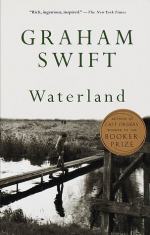|
This section contains 174 words (approx. 1 page at 400 words per page) |

|
Higdon, David Leon, "Double Closures in Postmodern British Fiction: The Example of Graham Swift," in Critical Survey, Vol. 3, No. 1, 1991, pp. 88-95.
Higdon analyzes Swift's use of closure (that is, how he ends his novels) in Waterland and other works. He concludes that Swift synthesizes traditional endings with a postmodernist open-endedness.
Hutcheon, Linda, A Poetics of Postmodernism: History, Theory, Fiction, Routledge, 1988.
Hutcheon includes an analysis of Waterland, concluding that the narrative strategy of the novel is designed to question modern concepts of history and to explore the processes of historiography.
Janik, Del Ivan, "History and the 'Here and Now': The Novels of Graham Swift," in Twentieth Century Literature, Vol. 35, No. 1, Spring 1989, pp. 74-88.
Janik discusses the relationship between history and the present in Swift's first three novels.
Landow, George P., "History, His Story, and Stories in Graham Swift's Waterland," in Studies in the Literary Imagination, Vol. XXIII...
|
This section contains 174 words (approx. 1 page at 400 words per page) |

|




